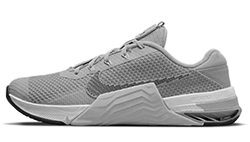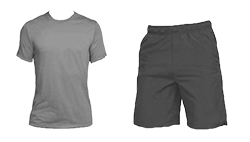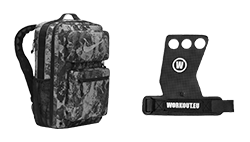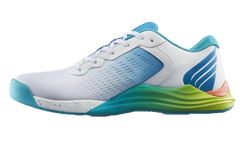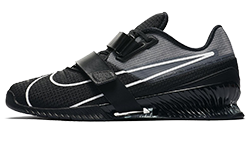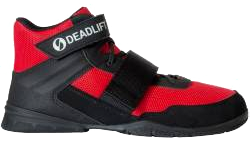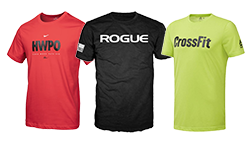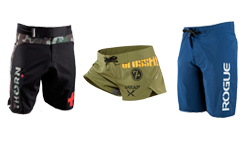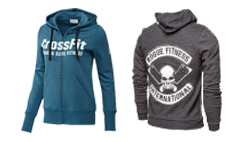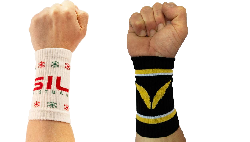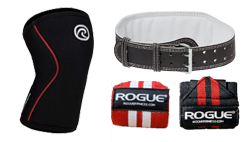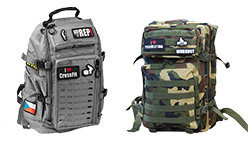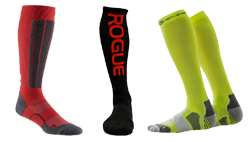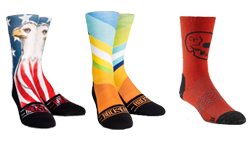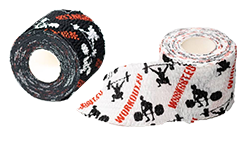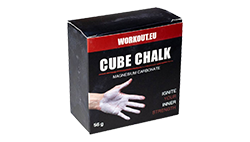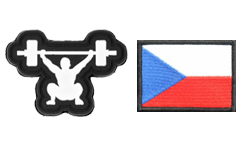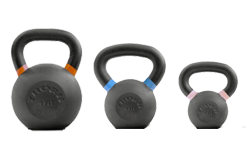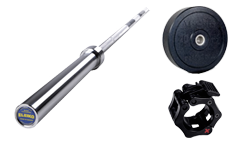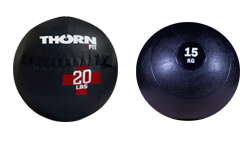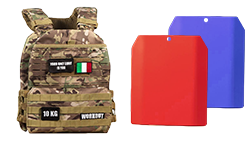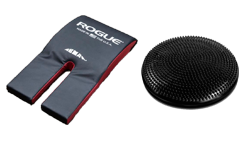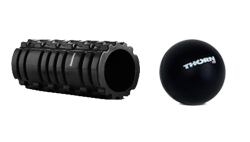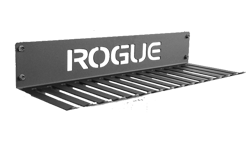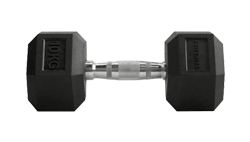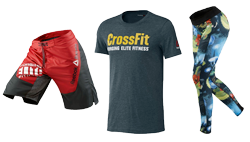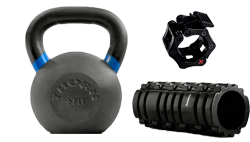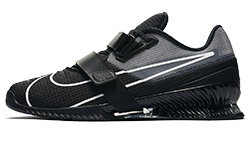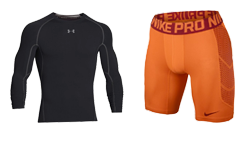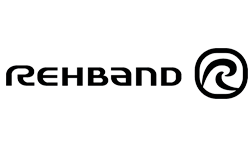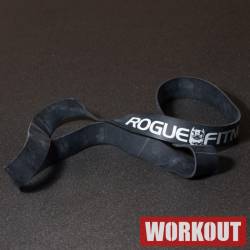Back to news
How to Choose the Right Resistance Band
The following article will help you choose the right resistance band, its size, and what to use it for.
What is a resistance band used for?
It is a simple yet highly effective strengthening tool. The advantage is primarily its versatile use. Resistance bands are very popular for both home and outdoor workouts, as well as in gyms. You can use the resistance of the band for support (meaning it reduces your weight and therefore the load, in other words, helps you lift more) or conversely for resistance (meaning it adds imaginary weight and makes the exercise more difficult).
It is also ideal for lighter compensatory exercises, mobility training, and stretching before and after workouts.
Under this link, you will find the entire offer of resistance bands for purchase.
Supporting exercises: Pull-ups, muscle-ups, sit-ups,....
Resistance exercises: Dips, squats, bench press, bicep curls,...
Thanks to their versatility, resistance bands have found their way into all types of exercises such as CrossFit, powerlifting, fitness, weightlifting, but also in dance, running or aerobics.
When choosing the right resistance band, you will be guided by these important questions, where you will clarify what you actually expect from the band and which one will be most suitable for you.
1. What will I use the resistance band for?
When choosing the right band, the first and absolutely essential task is to consider the purpose for which I am actually buying the resistance band. Do I need a resistance band for assistance with pull-ups (which is the most common request)? In that case, I will choose a stronger resistance than in cases where I only need the band for stretching or compensatory exercises.
2. What is my physical condition?
Have I been exercising for a long time? What is my fitness level? How much do I actually weigh?
Another crucial factor is to assess your physical condition as accurately as possible. If I need help with pull-ups and I'm a beginner, or I can barely do one pull-up, I will need more support than an athlete who has been training for the second year and needs to practice muscle-ups and only needs weaker bands to overcome the problematic dead spot. Similarly, if you are a man weighing 120 kg, you have to choose a significantly higher resistance than a person who is smaller and weighs, say, 65 kg. Even though both of you are beginners and cannot do even one pull-up.
3. Do I need help or resistance?
It is very important whether I will need help from the band - that is, to help me with more repetitions, or whether I will need it to create resistance during exercise and thus make it more difficult. Here, it is again important to evaluate your fitness level. For resistance use, it is generally better to choose heavier resistance for exercises of larger muscle groups, such as squats, leg presses, bench presses, etc. And lower resistance when exercising muscles such as shoulders or biceps.
For the assisting function of the resistance band, it is slightly more complicated and it is necessary to think comprehensively in the context of other described factors.

General recommendations for selecting suitable resistance bands
Let's now take a look at resistance bands in terms of their purpose. We'll list the most common exercises that are performed with them and provide tips on which band to choose.
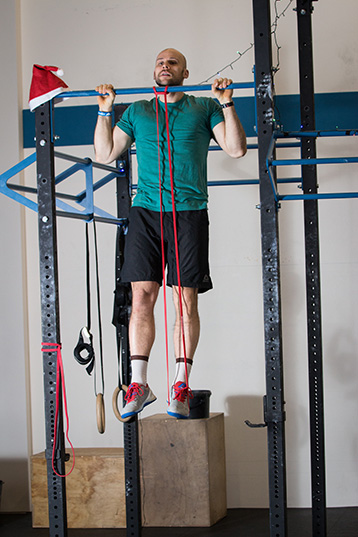
Pull-ups
If you are a beginner woman, I generally recommend buying a resistance band that corresponds to approximately half of your weight. If you are a complete beginner with a smaller overweight or not much of a sportsperson and don't trust yourself, I recommend choosing a slightly higher resistance. You can always find the resistance value in the product details (it is necessary to take into account that the resistance band does not have the same resistance throughout its entire length, but the resistance increases as the band is stretched. The value of the resistance in kg specified is at maximum stretch of the resistance band.).
On the other hand, if you are already in good shape, have some sports training behind you, but still cannot pull yourself up without assistance, I would choose less than half of your weight as resistance, as you will improve very quickly.
For beginner men, the same applies, only they should choose an equivalent of one third of their weight instead of half.
Tip: The vast majority of fitness centers have various resistance bands available for rent. Additionally, many of them offer free trial classes, so even those of you who work out outside on a workout playground or want to exercise at home have the opportunity to try it out this way.
For advanced athletes, it is quite simple because they already know what they need and have tried resistance bands before.
Running
Using resistance bands while running is relatively uncommon. However, for special training or to build explosive power, this usage is very practical. In short, you need to be in pairs with a resistance band, and while one person tries to run forward, the other person tries to slow down the run. Thanks to the accumulation of energy in the resistance band, its use is much more suitable than, for example, using an inelastic rope.
In selecting the resistance, the runner's weight is critical. A resistance of around 30 kg is ideal for running. For example, a resistance band with a resistance of 45 kg will no longer stretch enough, which is expected from the band.
Dips
..or triceps dips on parallel bars, are used to strengthen the triceps. This is an excellent and one of the basic exercises. Dips are slightly easier to perform than, for example, pull-ups. Therefore, it is more appropriate to choose smaller resistance bands - again, it depends a lot on your weight and fitness level. For women, it should be less than half of their body weight. For men, a maximum of around 30 kg of resistance.
For dips, it is also straightforward and recommended to combine multiple resistance bands at once. Use the synergy of two or more bands to gain greater resistance in the final sets when there is little strength left.
Muscle-up
It is usually recommended that before practicing muscle-ups, you should be able to do at least 10 pull-ups with your own body weight (without the help of resistance bands or colleagues). If you are already at this level but cannot yet do a muscle-up, I recommend using resistance bands with a range of 20-30 kg depending on your individual strength. There is no need to choose heavy resistance bands because you usually only need a little help to get past the "zero" point and swing into a muscle-up.
Powerlifting, fitness, etc.
Resistance bands have great use in gyms and places where more experienced athletes use them as additional resistance for exercises such as bench press, squat, deadlift, etc. Essentially, you hook them together with a certain number of weights onto a bar (which you must of course secure to some structure) and the resistance band then creates resistance during the exercises. Choose bands with a resistance of 45 kg+ based on your current fitness level and the goals you want to achieve.
Stretching, mobility, etc.

When you need to strengthen specific muscles, for example around the joints, choose the smallest resistances. These muscles tend to be smaller and less exercised. At the same time, it targets the specific muscle, which leads to its isolation. Therefore, the weakest resistance bands will be more than enough for you. Of course, if you are a guy who deadlifts 300 kg and your overall strength corresponds to that, go for a higher resistance. But you know what you want :)
What types of bands are in our offer?
- Latex long resistance bands that you can use, for example, for pull-ups, dips, helping with muscle-ups, or a whole range of strength exercises such as squats, good mornings, or bent over rows.
- Textile long resistance bands, which have the same usage as latex bands. The difference is in the material from which the band is made. Textile bands may be more comfortable for some athletes because they do not pull hair as much, for example. The only disadvantage of textile bands is that they are hard to clean in the gym.
- Latex short resistance bands that you can use for a wide range of exercises, whether it is strengthening your hips, the back of your legs, or your buttocks. Short resistance bands have many advantages and are certainly suitable for warming up every athlete.
They are practical and can be carried in a backpack, as they take up almost no space. - Textile short resistance bands, which have the same usage as latex bands, but for someone, the material from which the band is made may be an advantage. The textile material will probably be more comfortable for someone and will therefore be more suitable.
All bands in our offer can be purchased in various resistances, and the bands can also be combined with resistance to play with it.
Tip: Remember that you can, for example, buy two resistance bands and combine their resistances to get the total resistance. For example, when buying 13 kg and 22 kg, you have two bands. When using them together, you get a total resistance of 35 kg. And so on. Of course, if you want to combine five bands at once, it is also possible, but it won't be pleasant. I personally recommend a maximum of three.
You can also wrap the band multiple times around the bar and stretch it more, but be careful :)
WORKOUT.EU
-
-5%
Resistant rubber WORKOUT yellow - 7 kg
WORKOUT resistance rubbers are distinguished by their high quality and special surface treatment, which makes them non-stick to the skin. WORKOUT elastics are a versatile tool for training, rehabilitation, warming up or stretching. They are great for push-ups, deadlifts, self-weight exercises, pull-ups and more. We offer a 100% guarantee on our...
62 Kč discount 3 Kč
59 KčReduced price!In Stock -
-5%
Resistant rubber WORKOUT red - 13 kg
WORKOUT resistance rubbers are distinguished by their high quality and special surface treatment, which makes them non-stick to the skin. WORKOUT elastics are a versatile tool for training, rehabilitation, warming up or stretching. They are great for push-ups, deadlifts, self-weight exercises, pull-ups and more. We offer a 100% guarantee on our...
107 Kč discount 5 Kč
102 KčReduced price!In Stock -
-5%
Resistant rubber WORKOUT violet - 29 kg
WORKOUT resistance rubbers are distinguished by their high quality and special surface treatment, which makes them non-stick to the skin. WORKOUT elastics are a versatile tool for training, rehabilitation, warming up or stretching. They are great for push-ups, deadlifts, self-weight exercises, pull-ups and more. We offer a 100% guarantee on our...
248 Kč discount 12 Kč
236 KčReduced price!In Stock -
-5%
Resistant rubber WORKOUT green- 45 kg
WORKOUT resistance rubbers are distinguished by their high quality and special surface treatment, which makes them non-stick to the skin. WORKOUT elastics are a versatile tool for training, rehabilitation, warming up or stretching. They are great for push-ups, deadlifts, self-weight exercises, pull-ups and more. We offer a 100% guarantee on our...
331 Kč discount 17 Kč
314 KčReduced price!In Stock -
-5%
Odporová WORKOUT blue - 65 kg
WORKOUT resistance rubbers are distinguished by their high quality and special surface treatment, which makes them non-stick to the skin. WORKOUT elastics are a versatile tool for training, rehabilitation, warming up or stretching. They are great for push-ups, deadlifts, self-weight exercises, pull-ups and more. We offer a 100% guarantee on our...
533 Kč discount 27 Kč
506 KčReduced price! -
-10%
Latex odporová guma WORKOUT - VERY LIGHT
Short resistance rubber VERY LIGHT is the weakest of a number of these WORKOUT short gums. They are an excellent training rehabilitation tool to increase stability and to prevent injuries. They are commonly used as a supplement to yoga exercises, crossfit, zumba, stretching.
41 Kč discount 4 Kč
37 KčReduced price!In Stock -
-10%
Resistent band WORKOUT - MEDIUM
Short resistance rubber MEDIUM with moderate resistance from the popular WORKOUT range. They are an excellent training rehabilitation tool to increase stability and to prevent injuries. They are commonly used as a supplement to yoga exercises, crossfit, zumba, stretching.
66 Kč discount 7 Kč
60 KčReduced price!In Stock -
-10%
Resistance Bands WORKOUT - HEAVY
Short resistance rubber HEAVY is the strongest of a number of these WORKOUT short gums. They are an excellent training rehabilitation tool to increase stability and to prevent injuries. They are commonly used as a supplement to yoga exercises, crossfit, zumba, stretching.
79 Kč discount 8 Kč
71 KčReduced price!In Stock -
-10%
Monster band Rogue - green 65 lbs / 29,5 kg
Lenght: 41 inch (104 cm).Color: GreenResistance: 65 lbs (29,5 kg)Material: Natural latex Rogue Monster bands are the go to bands for powerlifting and mobility.
562 Kč discount 56 Kč
506 KčReduced price! -
-10%
Resistance band Rogue - černá 100 lbs / 45 kg
Lenght: 41 inch.Color: BlackResistance: 100 lbs (45 kg)Material: Natural rubber latex
711 Kč discount 71 Kč
640 KčReduced price! -
-30%
Resistance band SUPERBAND Small 65 lbs /...
ThornFit superbands are high-quality with a special surface treatment, thanks to which the rubber does not stick to the skin. You can use the ThornFit superbands for training, rehabilitation, warm-up / stretching.
470 Kč discount 141 Kč
329 KčReduced price! -
-30%
Superband SUPER-MINI 30 lbs / 13,5 kg
ThornFit superbands are high-quality with a special surface treatment, thanks to which the rubber does not stick to the skin. You can use the ThornFit superbands for training, rehabilitation, warm-up / stretching.
305 Kč discount 91 Kč
213 KčReduced price! -
-20%
Set of resistance bands - LIGHT BIG
Resistance rubbers WORKOUT are high quality rubber with a special surface finish that makes the rubber not stick to the skin. WORKOUT resisting rubber is used for training, rehabilitation, exercise / stretching. You will use them in shybeh, dead stroke, exercises with their own weight, attachments,
566 Kč discount 113 Kč
453 KčReduced price!In Stock -
-15%
Set of three text resistance bands
Set of three reinforcing textile gums that are suitable for rehabilitation, warming up before training and for activating the muscles around the hips and joints to increase speed and strength.Textile rubber helps to strengthen the hips and external rotators and helps knees during squats and deadlifts. Rubber fabric material ensures that this rubber will...
617 Kč discount 93 Kč
525 KčReduced price!



